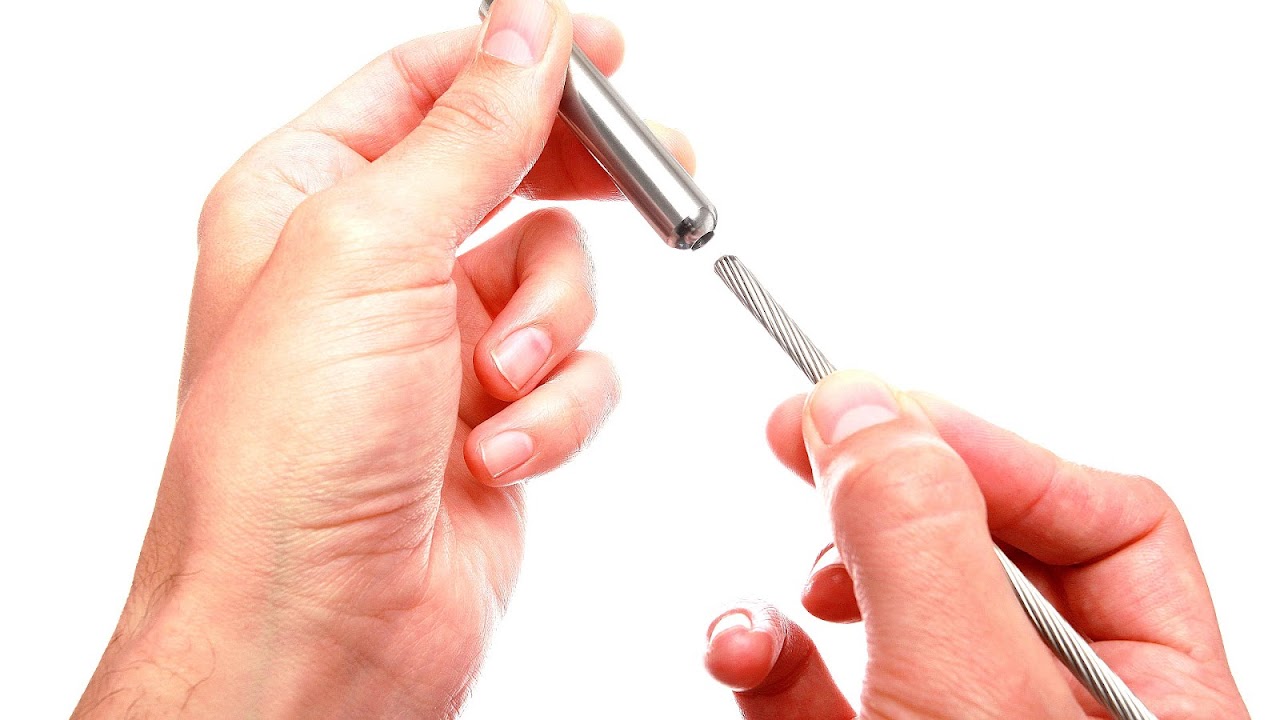Unlike a swage terminal which requires a special press, roller die or rotary hammer machine to crimp it onto a wire, a swageless terminal can be attached with no more than a pair of spanners. This makes them very useful if the wire assembly must be made-up on site.
Regardless of manufacturer the basic principle of operation is the same. The cable has its outer layers wrapped around a metal cone with its core running through a hole in the middle of said cone. The whole assembly sits inside a conical outer body. When the cable is in axial tension the action is such that the cone and wire are drawn further into the conical bore of the outer body resulting in a large reaction load. This load grips the wire and prevents further movement.
As with swage terminals, swageless terminals are available with a variety of different attachment methods; fixed clevis forks, toggling clevis forks, eyes and threaded studs (for insertion in a turnbuckle barrel).
Swageless terminals can be used for terminating cables wherever needed and have found applications in the construction, defense and marine industries.
This method of termination has one major advantage over a permanently swaged system which is that it can be removed from the cable end if necessary and re-used. This makes them very popular in the marine industry as they enable a quick repair to be made to a damaged cable while out at sea. Removing them from the wire end also allows anything which the cable has been threaded through (headstay furler) to be removed for servicing, re-threaded and the fitting re-attached.
There are several manufacturers of swageless fittings including Sta-Lok (who first devised the swageless system), Hi-MOD and Norseman-Gibb.
Source of the article : Wikipedia


EmoticonEmoticon